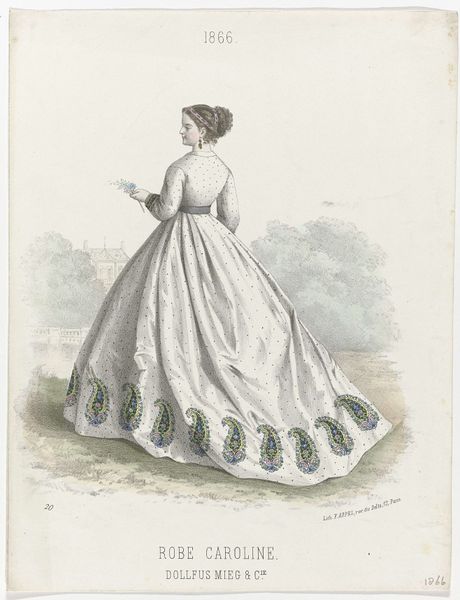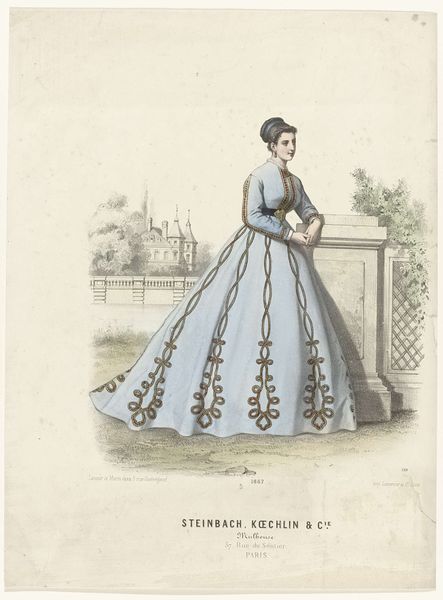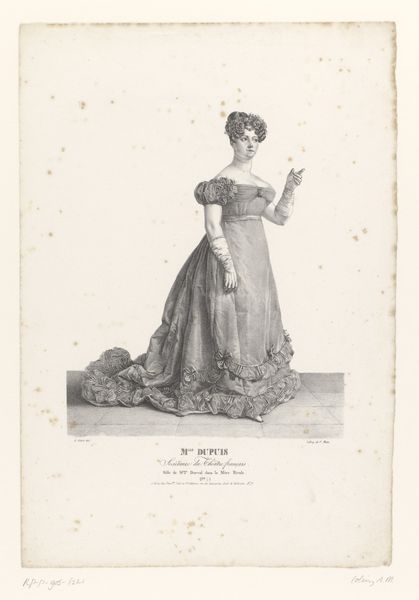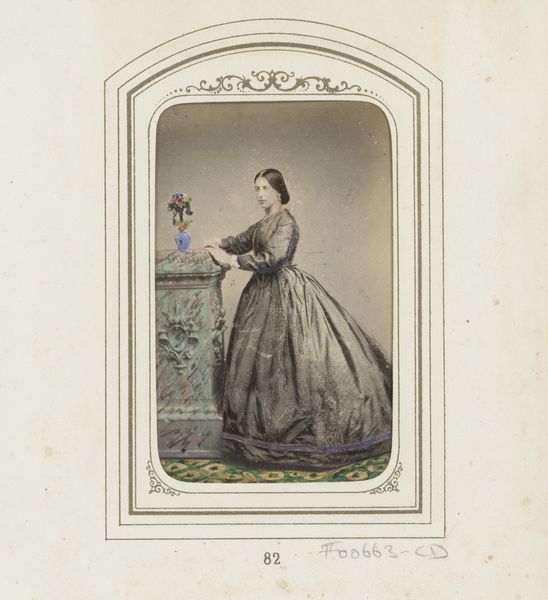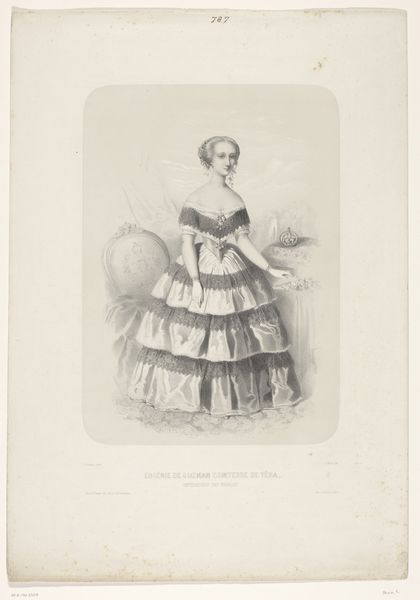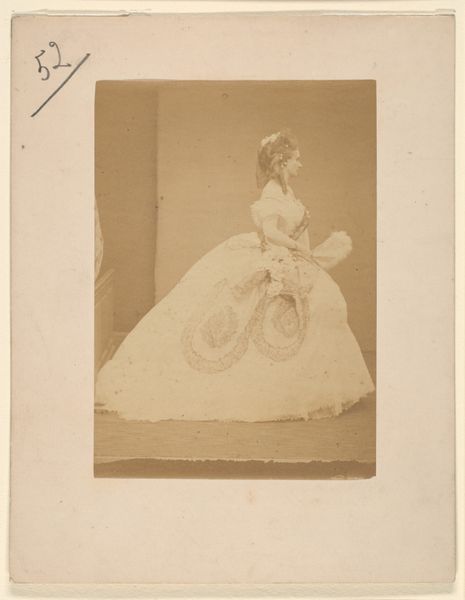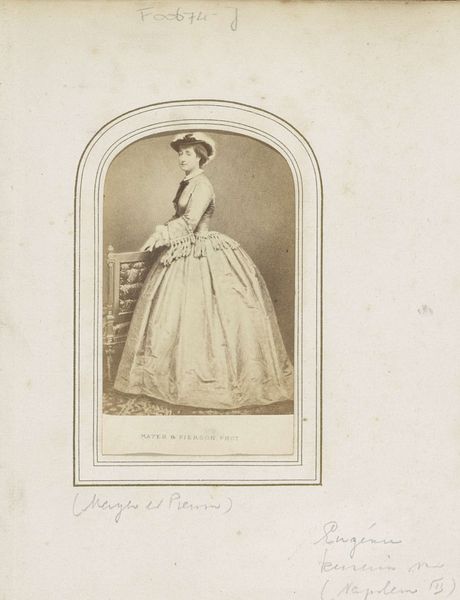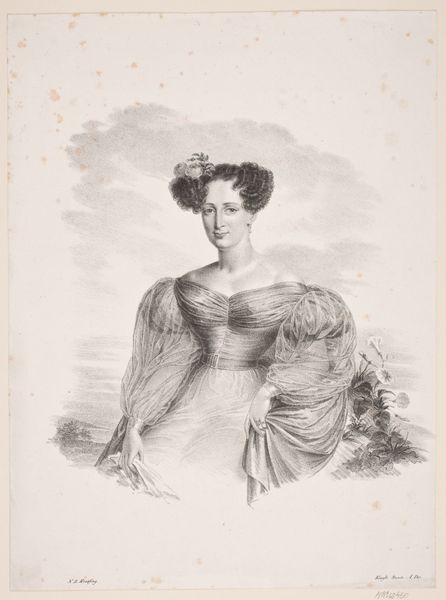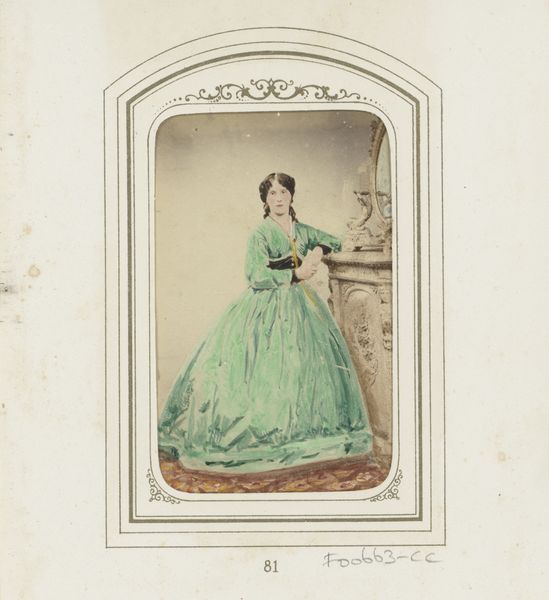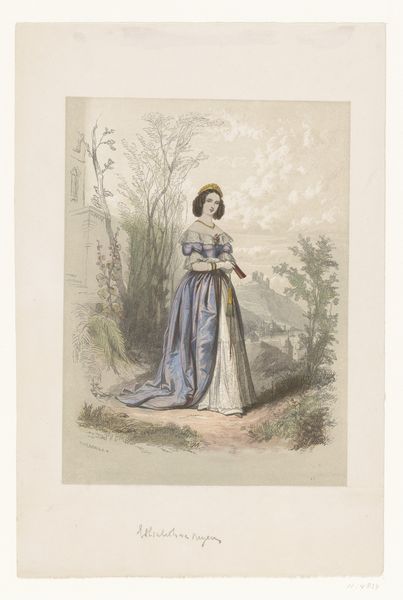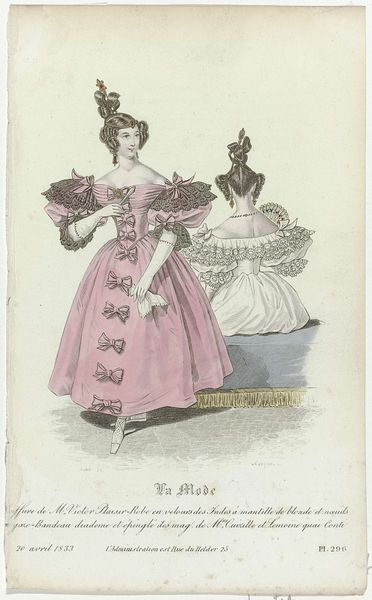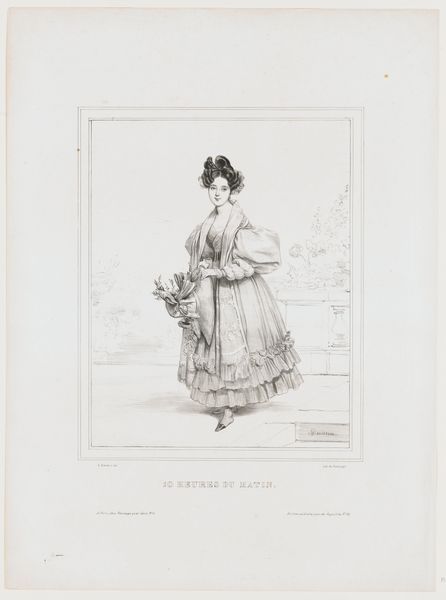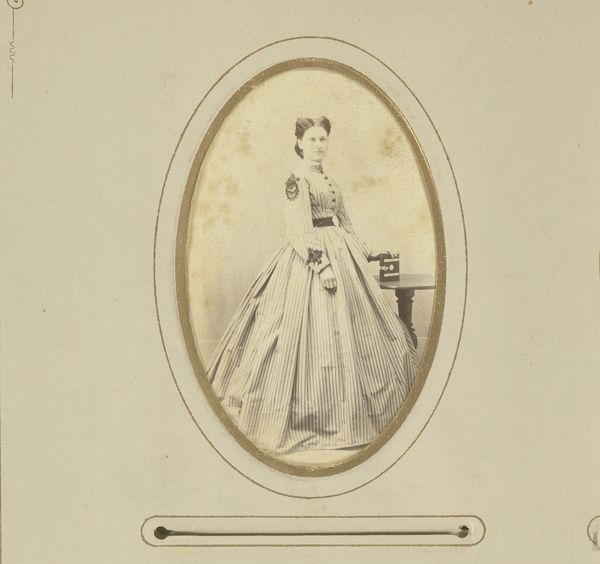
Dimensions: Sheet: 14 3/16 x 10 13/16 in. (36 x 27.4 cm)
Copyright: Public Domain
Curator: This is a lithograph dating back to 1865, entitled "Robe Trianon" and credited to Dollfus Mieg & Cie. It seems to be both a drawing and print. Editor: It feels delicate, almost ethereal. The landscape setting softens the rigid silhouette of the dress, which nevertheless looks extremely unwieldy, like it would take some help to even get into it. Curator: Absolutely, and that contrast is intriguing, isn't it? It's important to remember Dollfus Mieg wasn't just an artist. They were textile manufacturers, creating fabric and, likely, commissioning the drawings. Consider the division of labor at play here. Skilled artisans translating designs onto fabric on one end and perhaps dressmakers on the other. This print serves as a vital advertisement within a much larger industry. Editor: That is interesting. So not just promoting style, but the very fabric itself. It feels exclusionary to view a figure like this standing among some rather romanticist landscapes. Is this aspiration for some sort of refined bourgeoisie leisure? And to view this image, a consumer product in and of itself, we're not given insight into where the fabric even comes from, from who, at what social costs... Curator: Indeed, the textile industry was already complex by this period, involving global trade routes. We are viewing the *end* product here: luxury presentation in this form. This very technique, lithography, allows for a specific kind of affordable duplication. A broader reach to those who perhaps couldn’t buy haute couture directly but could aspire to its silhouette. Editor: In today’s era, looking back it almost reflects our fascination with fast-fashion cycles, except presented with an air of gentle femininity that is at odds with what the true means of production often looked like. We need to always contextualize: what this evokes emotionally versus the real social ramifications involved in crafting such images and products. Curator: And even with something as ostensibly ‘frivolous’ as fashion, analyzing this illustration through material production expands how we understand the broader cultural landscape. Thank you for offering such necessary reflection. Editor: My pleasure! I’ve learned that engaging art requires an ever questioning perspective, to remember there's always so much hidden.
Comments
No comments
Be the first to comment and join the conversation on the ultimate creative platform.
